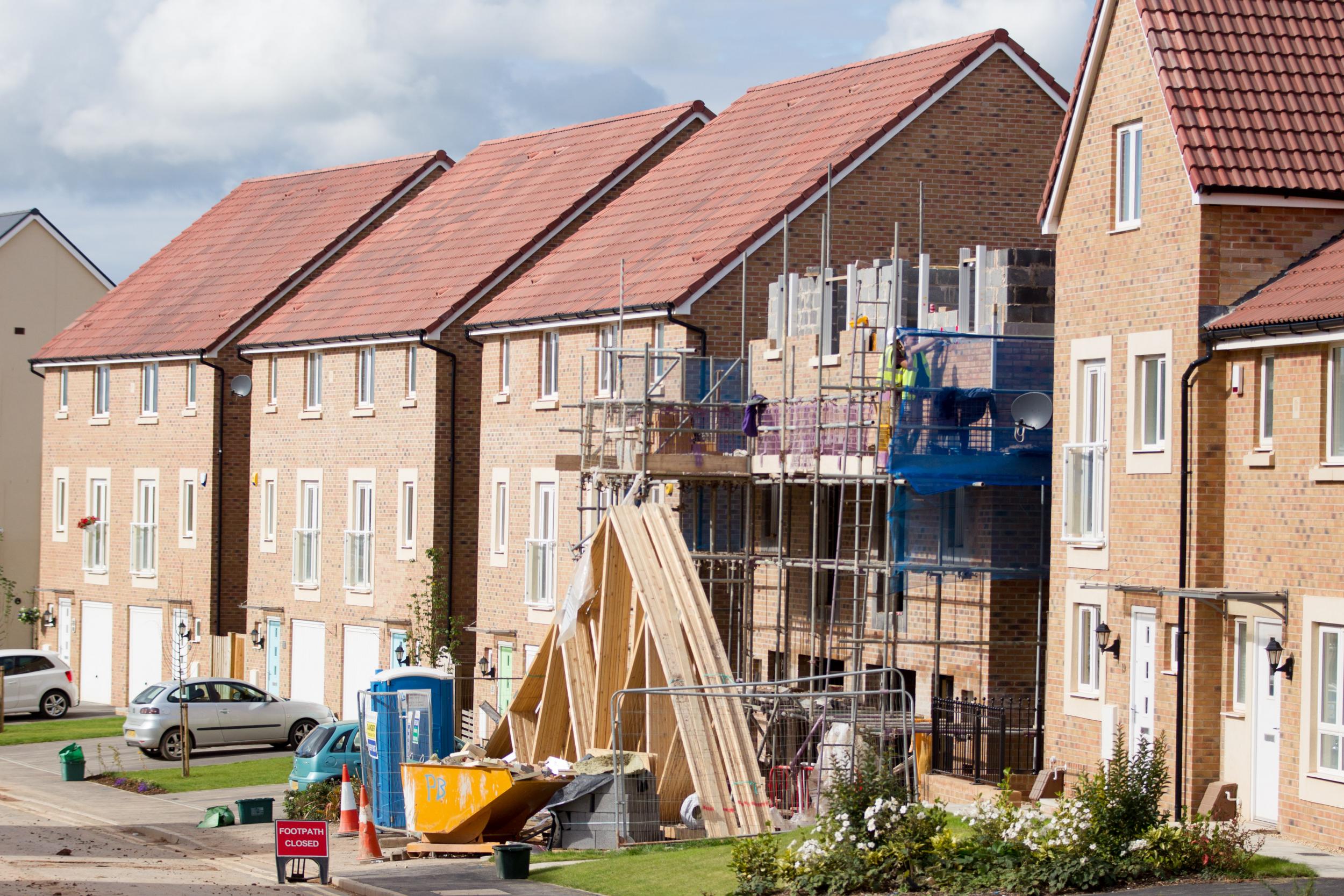Could building upwards solve the housing crisis?
Creative new measures are needed to address the housing crisis, but do planning law reforms go far enough?

Your support helps us to tell the story
From reproductive rights to climate change to Big Tech, The Independent is on the ground when the story is developing. Whether it's investigating the financials of Elon Musk's pro-Trump PAC or producing our latest documentary, 'The A Word', which shines a light on the American women fighting for reproductive rights, we know how important it is to parse out the facts from the messaging.
At such a critical moment in US history, we need reporters on the ground. Your donation allows us to keep sending journalists to speak to both sides of the story.
The Independent is trusted by Americans across the entire political spectrum. And unlike many other quality news outlets, we choose not to lock Americans out of our reporting and analysis with paywalls. We believe quality journalism should be available to everyone, paid for by those who can afford it.
Your support makes all the difference.More and more people are resorting to adding an extra storey to their homes instead of moving, and the Government is on board. Communities Secretary Sajid Javid has proposed new planning reforms to make it easier for homeowners and developers to add additional storeys on top of properties.
In principle, adding an extra storey to an existing building makes sense. Rather than building homes on the outskirts of cities where infrastructure such as transport links and social facilities could be underdeveloped, adding more storeys to existing properties in and around an inner city landscape will cater to the high demand for real estate in such areas.
This is particularly true for London; with demand for rental and real estate investment rife, the opportunity for developers and homeowners to add additional storeys to properties in the capital will deliver welcome relief, helping homeowners needing more space as well as creating new flats and homes to rent or buy.
In fact, as residential developments slowly pop up around the country, a report last year revealed a clear market preference for traditional homes over new-builds. A Market Financial Solutions (MFS) survey of more than 2,000 UK adults found that 81 per cent would not like to live in a new-build housing development, while 79 per cent urged the Government to focus more on supporting the refurbishment of run-down properties to meet housing demand. In this regard, the Government’s latest housing announcement ought to be popular among the majority of homebuyers and property investors.
There are evidently positives to be taken from the potential changes to planning laws. However, building on existing properties also brings with it a number of issues. For one, developers and homeowners need to be aware of building regulations, particularly if an extension will impede the views of surrounding properties or conflict with the heritage characteristics of the property or its neighbouring area.
Regulation and planning permissions can also be difficult to navigate, and the stress of having applications reviewed and resubmitted can ultimately deter people. As such, the Government’s changes must focus on streamlining existing processes and competently resolving some of these concerns.
There is another important issue to address. Namely, when it comes to the construction of new properties and extensions in the UK, particularly within high-density areas, there are question marks surrounding building standards. Indeed, too often at present the quality of such work does not meet the standards of our European counterparts.

Last year, a report by Shelter revealed that more than half of new-build properties in England have had major faults in terms of their construction, fittings and utilities. And one does not have to look far to find instances of extension projects actually leading to disastrous outcomes due to poor construction.
In the bid to make a success of the proposed changes, there are valuable lessons to be learnt from international cities in how they manage height restriction laws, and property extensions more generally. For example, as one of Europe’s most densely populated cities, Paris has introduced a suite of new housing laws allowing extensions, with height restrictions that vary by neighbourhood.
While respecting regulations in place to ensure the city remains aesthetically pleasing, these reforms have opened up the potential for new storeys to be added to as many as 12,000 properties.
Similar developments are also being seen in Barcelona, where development companies such as House on the Roof (La Casa por el Tejado) are adding extra storeys to existing residential buildings that have not yet reached their legal height limit. Both these examples have been generally well received.
The Government’s reform to planning regulations, encouraging the council to approve more housing extensions, is a step in the right direction. But the success of the initiative will be limited by the knowledge and appetite of the individuals or businesses who own the properties that could be grown vertically.

Do they know how to develop plans, obtain permission and source reputable tradespeople? Can they see a clear return on their investment? Does the support exist for people keen to add extra storeys to a building but have not done so before? These are the questions the Government must now look to answer if the latest housing reform is to prove successful.
There is indeed a broader question of whether these latest planning reforms are too little, too late – property affordability coupled with rising inflation means that an increasing number of people are relying on rental properties. Adding additional storeys onto existing properties in urban areas will alleviate some demand, but it does not go far enough in addressing some of the more systematic issues facing an increasing number of Britons who consider property ownership beyond their grasp.
In order to provide the desired relief to a market faced with rising demand and limited supply, reforms to house planning laws must be the first of many creative solutions that complement the development of new-build houses.
At this critical juncture, the property market is calling for leadership, and a commitment from the Government to deliver a series of reforms that address the concerns of all parties involved in UK real estate – be it those seeking affordable rental accommodation close to their work, young families hoping to buy a property or developers looking to build new homes in areas of need.
Of course, there is no simple answer, but the time of focusing on housing issues in short, sharp bursts must come to an end. So too must the high turnover in housing ministers; there have been a staggering 16 since 1997. The UK needs consistent policy backed by a long-term vision that looks to overcome the serious challenges facing the housing market over the next decade. House planning reforms are part of the solution, but let us not be complacent – more needs to be done.
Paresh Raja is the CEO of Market Financial Solutions
Join our commenting forum
Join thought-provoking conversations, follow other Independent readers and see their replies
Comments